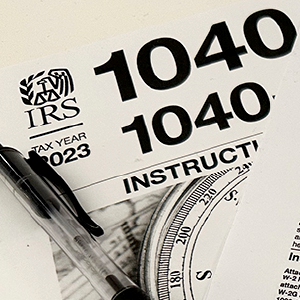Law in the Marketplace: A hot new book about the Corporate Transparency Act
| Published: 09-23-2023 2:00 PM |
As New Hampshire business owners will know, in 2021, Congress enacted a new statute, called the Corporate Transparency Act (the “CTA”) that, beginning on January 1, 2024, will impose strict new reporting requirements on almost all New Hampshire business entities concerning the entities themselves and their real owners and managers (who may differ from the owners and managers listed in their business records). Prudent business owners will address these reporting requirements in their operating agreements and shareholder agreements or in amendments to these documents. A business entity’s failure to meet CTA reporting requirements may result in serious civil and criminal penalties, including major fines and imprisonment.
The U.S. Treasury Department agency responsible for CTA matters is the Financial Crimes Enforcement Network, often identified as FinCen. Last Monday, September 18, FinCen published an important new 47-page e-book entitled “Small Entity Compliance Guide” (which I’ll refer to here as the “Guide”). The link for access to the Guide is https://www.fincen.gov/boi/small-business-resources. The subtitle of the Guide is “BOI — Beneficial Ownership Information — Reporting Requirements.”
Technically, the Guide does not have the legal force of a statute or of regulations published in the Federal Register. However, if a business entity complies with the Guide, it can be confident that FinCen will treat it as complying with the CTA itself; and if it doesn’t comply with the Guide, it may face serious CTA problems.
Fortunately, the Guide is written in plain English style that even Strunk & White, regarded by many writers (and by me) as the bible of English style, would commend. The Guide should be read carefully by New Hampshire small business entity managers and by their lawyers and accountants.
Obviously, a short column like this one can’t pretend to provide a comprehensive overview of the Guide. However, the following are 11 comments about key contents in the Guide. These comments will provide readers with a useful initial understanding of the Guide.
The U.S. Congress has estimated that every year, at least two million business entities are formed. It is not unreasonable to guess that at least 150 million U.S. and foreign businesses will be subject to CTA reporting requirements.
The Guide contains six chapters. Taken together, these six chapters address virtually everything that small business owners need to know about compliance with the CTA. Obviously, however, lawyers with CTA expertise who provide clients with CTA advice and who draft CTA provisions for operating agreements and shareholder agreements will need to know a lot more.
On and after January 1, 2024, small business entities must use a FinCen form to file CTA disclosures, and they must file this form electronically in the FinCen online CTA portal. However, FinCen has not yet finished constructing this portal, publishing this form or disclosing the digital address to which to send completed CTA reports, and the Guide is silent about these key matters.
Article continues after...
Yesterday's Most Read Articles
 Hopkinton tries to nab out-of-town trash bandits
Hopkinton tries to nab out-of-town trash bandits
 UNH faculty and students call on university police chief to resign following his alleged assault on a student
UNH faculty and students call on university police chief to resign following his alleged assault on a student
 Steeplegate project to reopen to public comment as developer seeks to reduce required parking
Steeplegate project to reopen to public comment as developer seeks to reduce required parking
 Monitor Way developer seeks $4.67 million from city for proposed new road
Monitor Way developer seeks $4.67 million from city for proposed new road
 Northeast Coffee Festival comes to Concord this weekend
Northeast Coffee Festival comes to Concord this weekend
 NH Senate panel frowns on bill to ease vehicle inspection requirements
NH Senate panel frowns on bill to ease vehicle inspection requirements
Like the CTA itself, the Guide requires small business entities to file CTA reports not only if they have been formed under a state law but also if they are formed under Native American tribal law. However, there are presently no federally recognized Native American tribes listed as being located in New Hampshire.
Chapter 1 of the Guide lists the 23 types of reporting companies exempt from filing CTA reports. However, only one of these exemptions is likely to apply to any New Hampshire small business entity — namely, the “large operating company” exemption that I discussed in my previous Concord Monitor column about the CTA. Most of the rest of the reporting company exemptions are for companies already subject to substantial federal or state regulation and thus unlikely to be owned or managed by the “malign actors” the CTA is designed to identify and prosecute.
Unfortunately, however, Chapter 1 gives only brief descriptions of these heavily regulated companies, and some business owners may well be uncertain whether any of them applies to their entity. These business owners should discuss this question with lawyers who are CTA experts.
Although the Guide does not define the term “small business entity,” the Guide very probably means the term to refer to any business entities that do not have at least 20 full-time employees and that have not reported at least $5 million in net U.S.-source income in its most recent federal tax return.
The two most important concepts under the CTA and in the Guide are “business entity owner” and “business entity controller.” The Guide explains these terms in substantial detail and with numerous hypothetical examples. Small business entity owners and managers and their lawyers must thoroughly understand these concepts and examples.
In their CTA reports, reporting companies must disclose information about their “company applicants” — i.e., (a) the individuals who file the state or tribal documents that will create these companies; and (b) those who control them. In New Hampshire, the main such documents are certificates of formation (for LLCs) and articles of incorporation (for business corporations).
According to the Guide, filing companies may not be company applicants. However, there are workarounds to this rule, and, in order to avoid filing errors, many business owners, notwithstanding the rule, should hire filing companies to file their CTA reports.
The Guide describes in detail the several situations in which small business entities must update or correct their original CTA reports within 30 days. The operating agreements and shareholder agreements of New Hampshire business owners should make these CTA situations crystal clear.
As I stated in my previous CTA column, if you care to contact me about any question you may have about CTA reporting, I’ll do my best to answer your question. My telephone number is (603) 856-7172. My email address is lawjmc@comcast.net.
]]>


 Neighboring landowner objection stalls Steeplegate redevelopment approval
Neighboring landowner objection stalls Steeplegate redevelopment approval Following budget cut, Pembroke revisits future of elementary school re-build
Following budget cut, Pembroke revisits future of elementary school re-build Granite Geek: Free government software for taxes – what could go wrong? (Not much, as it turns out)
Granite Geek: Free government software for taxes – what could go wrong? (Not much, as it turns out) To snuff out cancer, NH firefighters seek regular screenings
To snuff out cancer, NH firefighters seek regular screenings
